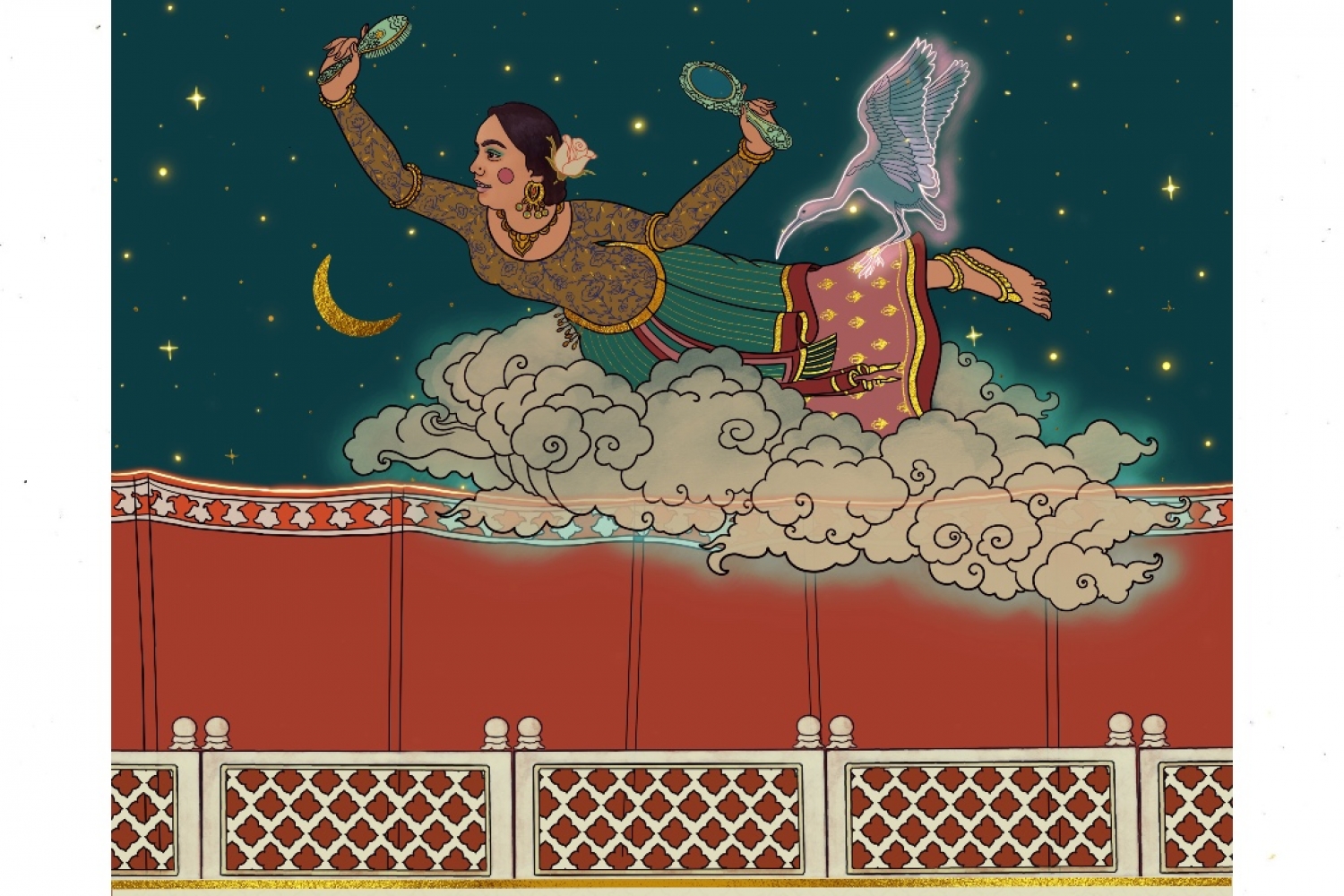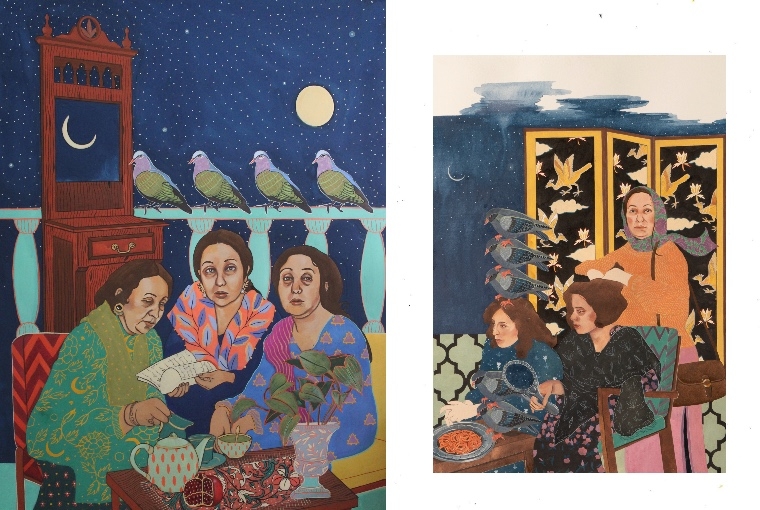
Maryam Sunny II

Maryam Sunny II
A visual artist from Lahore, Khadijah Rehman trained at the National College of Arts in painting, and over the past few years, has expanded her practice into being explorative. Now experimenting within multiple mediums ranging from gouache paintings to animation, Khadijah seeks to fulfill her curiosity. For as long as she can remember, she was a lover of the arts, finding herself giddy with the written word and images. For her, the field of art and design was a given, and now, as she thrives with her practice, we explore all that she has to offer.
The Practice
With time, my practice has evolved from being about me as an individual to being about us as a collective consciousness. Us being South Asian women in particular, and especially in relation to one another. The yearnings, longings, sorrows and celebrations of being a woman, mother, daughter or sister. It is a unique, all consuming experience, just being alive as a woman. In my work, the night is a recurring character, used as the backdrop for strange scenes, of personal introspection and human interaction, ranging from acts of everyday familial intimacy to events that hover between the past and the present in their quality of universality. I also make use of a dreamlike environment — figures existing without shadows, elements, objects and motifs repeating as if glitching. Through my practice, I meander through small, seemingly ordinary events that occurred within my personal history and the histories of the women around me, rearranging and shaping these events into something surreal and nostalgic.
The Inspiration
Each work I create is a nod to some aspect of human interaction and behaviour, and elements of family, love, longing, transformation and introspection remain at the forefront. The dizzying and devastating commotion of being alive, the wonderment of liminal spaces and dreams, the sanctity of being a woman, and being around other women in safe spaces, inspires and drives my work. This particular body of work started to come together two years ago when I got married and moved in with my husband’s family. Growing up, my mother and I were the only two women in the house, and in a lot of ways, we are reflections of each other, exploring womanhood together. Now, suddenly, I was around women I had not grown up with, who were in many ways so different — there are so many ways of being a woman.
In an old cupboard in the house I came upon albums of ancient photographs, painstakingly labelled and numbered, courtesy of my father-in-law, who has documented his family meticulously through the years. It was fascinating, traversing their history and seeing how it connected to mine in so many ways, visual motifs appearing as if shared between our two worlds — plates of peeled fruit, bedraggled charpoys in verandas, ornate furniture, patterned socks peeking through fluorescent chappals. I began gathering photographs of the women in my family, and of friends, looking for connections. Through these photographs, a lot of stories — of femininity, self reflection, love, intimacy and secret longing — revealed themselves to me, and these stories insisted on being told.

L: The Witnessing
R: Old Wives' Tales
The Process
I make use of a lot of old and new photographs, and pore madly over ancient miniature paintings, especially Mughal and Persian works. It delights me that old family albums and old miniature paintings have so much in common in terms of their underlying themes, because the marrow of the human condition remains the same. When I make initial drawings, observations from my present are combined with evidence I have from the past, and I attempt to unite the living and the dead in my work. I attempt to create a liminal space in my paintings, where women from the past and the present come together, within environments influenced by miniature art. Sometimes it might even be different versions of the same woman, plucked from various stages of life, but brought together within a single space unhindered by linear time.
In dabbling with the formal and thematic aspects of miniature painting, a lot of the ancient processes have made their way into my work. I use gouache as a medium, which is opaque watercolour concocted and mixed in seashells. The qalam, which is a thin, squirrel hair paint brush used for sensitive linework by miniature artists, plays a huge role in my work. I delight in the delicate flow of the brush, the frailty of the lines, but lack the crisp, methodical approach of a traditional miniature painter. I would say my creative process is neither only of a contemporary visual artist nor that of a disciplined miniature painter; odd bits and pieces have combined to form a process that tends to be playful, improvisational, and steeped in tradition but is also in a lot of ways, modern. I use digital drawing/painting and animation to work out a lot of the knots that form as I try to figure out ideas and compositions.
​
Text Unnati Saini
Date 11-04-2022